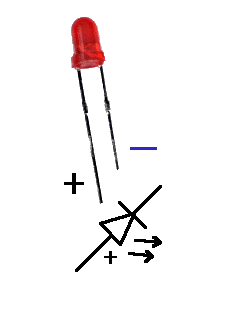


When the number of pins reaches six all sorts of strange variations are possible. RGB with individual pinouts allows common anode, common cathode configuration as well as series connection of the LEDs. Common cathode and common anode versions are available. The 4-pin package is most commonly seen on RGB (red-greeen-blue) LEDs. 4-pin The popular RGB, 4-pin, LED allows generation of colours across the visible spectrum. Either LED can be turned on independently or blended to create a combination. The three-pin LED is usually a pair of LEDs of different colours sharing a common anode or common cathode. The bi-colour LED’s datasheet will specify which way round to connect to ensure the correct colour. Others may have both LEDs the same colour and this can be useful in AC applications as it can conduct on both cycles of the mains and eliminates the need for a rectifier. Some are dual-colour so that reversing the current through them changes the colour. The two-pin package can contain a single or two back-to back LEDs.īe aware that bi-colour LEDs are also sold in this package. Generally these are a single LED. Polarity is indicated by the long lead (+ / anode) or the flat on one side of the base (- / cathode). The most common type of LED is the 2-pin, 5 mm, round lens type. It helps during assembly as pins can be inserted one at a time from longest to shortest without having to align all the pins simultaneously.Note that LEDs usually have no two pins the same length. See Testing unknown LEDs for more on this topic. You can use a higher voltage such as a 9 V battery and double the value of R1 but you might damage sensitive devices on reverse voltage. A 5 V supply is available from a USB supply or, for example, an Arduino. Most LEDs will light at less than 5 V and can tolerate 5 V reverse voltage.

Simple LED test circuit Simple LED test circuit. Most LEDs are simple single device with two leads but packages with two or more LEDs are common and there are various LED pinouts in use.


 0 kommentar(er)
0 kommentar(er)
